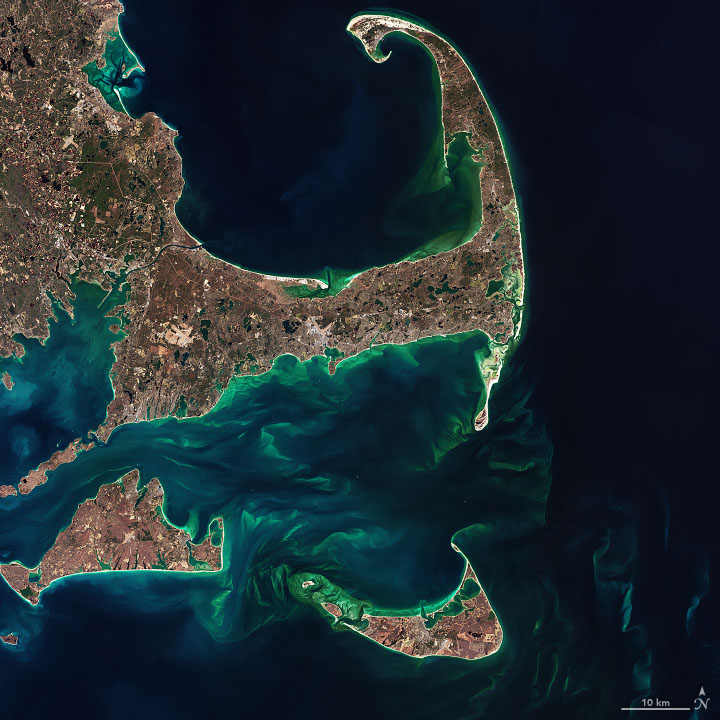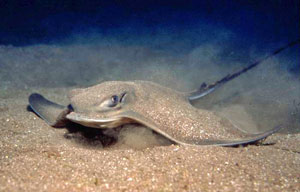|
Bullnose Ray
The bullnose ray (''Myliobatis freminvillii'') is an eagle ray, which is widely distributed in the western Atlantic. It is found at depth above in coastal waters from Cape Cod down to Argentina, but is absent from parts of the western central Atlantic. It reaches a maximum size of in disc width and gives birth to six young per litter. It is often confused with the southern eagle ray The Southern eagle ray (''Myliobatis goodei''), sometimes known as the Southern eagle fish or the rockfish, is a ray species in the family Myliobatidae. It lives in waters just off of the Atlantic coast, from the tip of Florida down to Argentin ... (''M. goodei''). The bullnose ray feeds mostly hermit crabs, gastropods, and bivalves. References Myliobatis Fish described in 1824 Taxobox binomials not recognized by IUCN {{Chondrichthyes-stub Springer Link ... [...More Info...] [...Related Items...] OR: [Wikipedia] [Google] [Baidu] |
Charles Alexandre Lesueur
Charles Alexandre Lesueur (1 January 1778 in Le Havre – 12 December 1846 in Le Havre) was a French Natural history, naturalist, artist, and explorer. He was a prolific natural-history collector, gathering many type specimens in Australia, Southeast Asia, and North America, and was also responsible for describing numerous species, including the spiny softshell turtle (''Apalone spinifera''), smooth softshell turtle (''Apalone mutica, A. mutica''), and common map turtle (''Graptemys geographica''). Both Mount Lesueur and Lesueur National Park in Western Australia are named in his honor. Early life Charles Alexandre Lesueur was born on January 1, 1778, to Jean-Baptiste Denis Lesueur and Charlotte Thieullent. Charlotte died when Charles was sixteen years old, and Charles' maternal grandmother took care of him and his siblings. Charles attended the Collège du Havre and possibly the Ecole publique des mathématiques et d'hydrographie. He was in military service in a cadet bat ... [...More Info...] [...Related Items...] OR: [Wikipedia] [Google] [Baidu] |
Cape Cod
Cape Cod is a peninsula extending into the Atlantic Ocean from the southeastern corner of mainland Massachusetts, in the northeastern United States. Its historic, maritime character and ample beaches attract heavy tourism during the summer months. The name Cape Cod, coined in 1602 by Bartholomew Gosnold, is the ninth oldest English place-name in the U.S. As defined by the Cape Cod Commission's enabling legislation, Cape Cod is conterminous with Barnstable County, Massachusetts. It extends from Provincetown in the northeast to Woods Hole in the southwest, and is bordered by Plymouth to the northwest. The Cape is divided into fifteen towns, several of which are in turn made up of multiple named villages. Cape Cod forms the southern boundary of the Gulf of Maine, which extends north-eastward to Nova Scotia. Since 1914, most of Cape Cod has been separated from the mainland by the Cape Cod Canal. The canal cuts roughly across the base of the peninsula, though small portions of the ... [...More Info...] [...Related Items...] OR: [Wikipedia] [Google] [Baidu] |
Myliobatis Goodei
The Southern eagle ray (''Myliobatis goodei''), sometimes known as the Southern eagle fish or the rockfish, is a ray species in the family Myliobatidae. It lives in waters just off of the Atlantic coast, from the tip of Florida down to Argentina, inhabiting estuaries or bays to give birth during spring and summer and migrating to the open sea in autumn and winter. It has an average width of 99 centimeters, and a length of 60 centimeters. It is often confused with the bullnose ray, a related species in the genus ''Myliobatis'', due to the two species' similarities in appearance. Taxonomy Samuel Garman described the southern eagle ray in 1885. Distribution and habitat The Southern eagle ray lives on various parts of the Atlanta coast. Sightings have been reported from the coast of Southern Mexico all the way down to Argentina, as well as on the coast of Florida. The specific countries that the Southern eagle ray is native to are Argentina, Belize, Brazil, Colombia, Costa ... [...More Info...] [...Related Items...] OR: [Wikipedia] [Google] [Baidu] |
Myliobatis Freminvillii Jaws
''Myliobatis'' is a genus of eagle rays in the family Myliobatidae. Description ''Myliobatis'' species can reach a width up to about . Their bodies consist of a rhomboidal disc, wider than long, with one dorsal fin. The head is broad and short, with eyes and spiracles on the sides. The tail is slender, with one or two large spines at the base, without tail fin. The teeth are arranged in the lower and upper jaws in flat tooth plates called pavement teeth, each consisting of about seven series of plates, which are used to crush clam shells and crustaceans. Biology ''Myliobatis'' species are ovoviviparous. Their gestation last about 6 months and a female produces four to seven embryos. ''Myliobatis'' species mainly feed on molluscs, bottom-living crustaceans, and small fishes. Habitat ''Mylobatis'' species live in warm, shallow waters. Adults prefer sandy shores, while juveniles can usually be encountered offshore. Species Extant species Currently, 11 species in this genus are r ... [...More Info...] [...Related Items...] OR: [Wikipedia] [Google] [Baidu] |
Myliobatis
''Myliobatis'' is a genus of eagle rays in the family Myliobatidae. Description ''Myliobatis'' species can reach a width up to about . Their bodies consist of a rhomboidal disc, wider than long, with one dorsal fin. The head is broad and short, with eyes and spiracles on the sides. The tail is slender, with one or two large spines at the base, without tail fin. The teeth are arranged in the lower and upper jaws in flat tooth plates called pavement teeth, each consisting of about seven series of plates, which are used to crush clam shells and crustaceans. Biology ''Myliobatis'' species are ovoviviparous. Their gestation last about 6 months and a female produces four to seven embryos. ''Myliobatis'' species mainly feed on molluscs, bottom-living crustaceans, and small fishes. Habitat ''Mylobatis'' species live in warm, shallow waters. Adults prefer sandy shores, while juveniles can usually be encountered offshore. Species Extant species Currently, 11 species in this genus are r ... [...More Info...] [...Related Items...] OR: [Wikipedia] [Google] [Baidu] |
Fish Described In 1824
Fish are aquatic, craniate, gill-bearing animals that lack limbs with digits. Included in this definition are the living hagfish, lampreys, and cartilaginous and bony fish as well as various extinct related groups. Approximately 95% of living fish species are ray-finned fish, belonging to the class Actinopterygii, with around 99% of those being teleosts. The earliest organisms that can be classified as fish were soft-bodied chordates that first appeared during the Cambrian period. Although they lacked a true spine, they possessed notochords which allowed them to be more agile than their invertebrate counterparts. Fish would continue to evolve through the Paleozoic era, diversifying into a wide variety of forms. Many fish of the Paleozoic developed external armor that protected them from predators. The first fish with jaws appeared in the Silurian period, after which many (such as sharks) became formidable marine predators rather than just the prey of arthropods. Mos ... [...More Info...] [...Related Items...] OR: [Wikipedia] [Google] [Baidu] |






